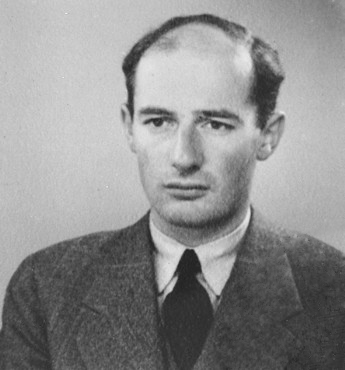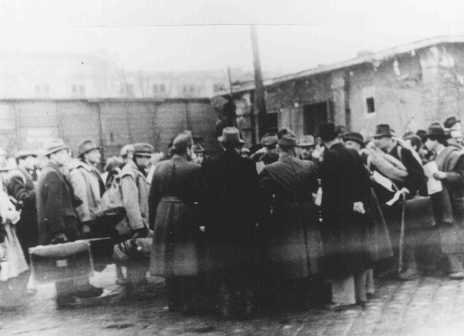 Raoul Wallenberg
Raoul Wallenberg
was born 1912 in Sweden to a prominent aristocratic banking family. He studied architecture in the United States before joining his family’s business. He became aware of Nazi Germany’s policies while travelling to Nazi-occupied countries in the early 1940s. When the Swedish government and the American War Refugee Board decided to help Hungary's Jews, Wallenberg was sent as secretary to the Swedish Embassy in Budapest with full diplomatic privileges. He arrived on 9 July 1944 with a list of Jews whom he was to help and 650 protective passports for Jews who had some connection with Sweden. However he soon widened the scope of his work, and he and his 340 employees ultimately rescued tens of thousands, or possibly as many as one hundred thousand, Jews in Nazi-occupied Hungary during the Holocaust. He was detained by the Soviet authorities on suspicion of espionage and subsequently disappeared. The circumstances of his death and his possible ties to US intelligence remain mysterious and are the subject of continued speculation.
By the time Wallenberg arrived in Budapest in July 1944, the Germans – under the leadership of SS officer Adolf Eichmann and helped by Hungarian forces – had already deported more than 400,000 Jewish men, women and children from Hungary. They had been deported on 148 freight trains between May 14 and July 8.
Only about 230,000 Jews were now left of a population that once numbered close to three-quarters of a million.
The story of a photo

Photo von Thomas Verés November 1944
© United States Holocaust Memorial Museum
By his own admission, the photograph was taken by Thomas Verés, then aged twenty-one. Verés was himself among the threatened Jews, but was protected by Wallenberg and employed as a photographer. At first he mainly took photos for the famous protective passports but at the end of November 1944, Wallenberg summoned Verés to Józsefváros station in Budapest’s 8th district of the same name, to photograph the (imminent) deportation of Jews to the German Reich and his intervention to prevent this.
Background
In November 1944, the Arrow Cross movement, which had recently seized power with the help of the Nazi regime, made use of its new authority to persecute and murder Jews, and to resume the deportations, which had temporarily been stopped in the summer of 1944. Although by this time the deportations no longer led to the death camps, they did transport people to camps in the German Reich, where the Jews were made to do the hardest of forced labour, as a result of which, many of the deported died even in the last few months of the war.
What do we see?
Verés reported in 1992, that he had taken the photo in secret, through a hole in his scarf. Although he had therefore been holding the camera, a Leica, slightly askew, the photo is impressive for its considerable depth of field. You can thus see clearly that a long line of middle-aged men are standing on a cobbled square in front of a goods wagon with closed doors. The men are all wearing thick coats to keep out the wintery cold and carrying items of luggage. Some of them have slung blankets over their shoulders in a military manner. These are obviously the Jews destined for deportation.
In the foreground of the photo a tightly-packed circle of at least nine men without luggage can be seen; they seem to be having a heated conversation. Prominent among them are uniformed figures, whose caps mark them out as Hungarian Arrow Cross militiamen. Raoul Wallenberg, wearing a dark coat and hut, and with his hands clasped behind his back, is standing on the outer edge of the circle, leaning slightly forward. Verés remembered that Wallenberg had been trying to free as many Jews as possible from the transport at the station. This is consistent with the fact that the Jews standing to the right of the group around Wallenberg are holding large white papers in their hands.
Note also that they are facing in the opposite direction to the others. As the papers are most probably the selfsame saving credentials, otherwise known as protective passports, which they had been given by Wallenberg, closer inspection reveals the photo to be in fact the very act of liberation and thus an absolutely spectacular source.
